The search landscape is evolving at breakneck speed. With Google’s AI-powered search features and answer engines transforming how users find information, traditional SEO approaches are quickly becoming outdated. This shift demands a fundamental rethinking of how websites optimize for visibility and engagement. The question isn’t whether AI will change SEO—it’s how quickly you can adapt your strategy to stay ahead of these changes.
In this guide, we’ll explore how to future-proof your SEO strategy using next-generation approaches like Answer Engine Optimization (AEO) and Generative Engine Optimization (GEO). You’ll discover practical techniques to maintain visibility, drive meaningful traffic, and convert visitors in an increasingly AI-dominated search environment.
The AI Search Revolution: Why Future-Proof SEO Matters Now
Search engines are rapidly evolving from simple keyword-matching systems to sophisticated AI-powered platforms that understand user intent, context, and relationships between topics. This transformation is fundamentally changing how content is discovered, displayed, and consumed online.
Google’s Search Generative Experience (SGE), AI Overviews, and similar features from other search engines are already reducing traditional organic click-through rates by providing direct answers within search results. For businesses relying on organic traffic, this presents both a challenge and an opportunity to evolve their approach.
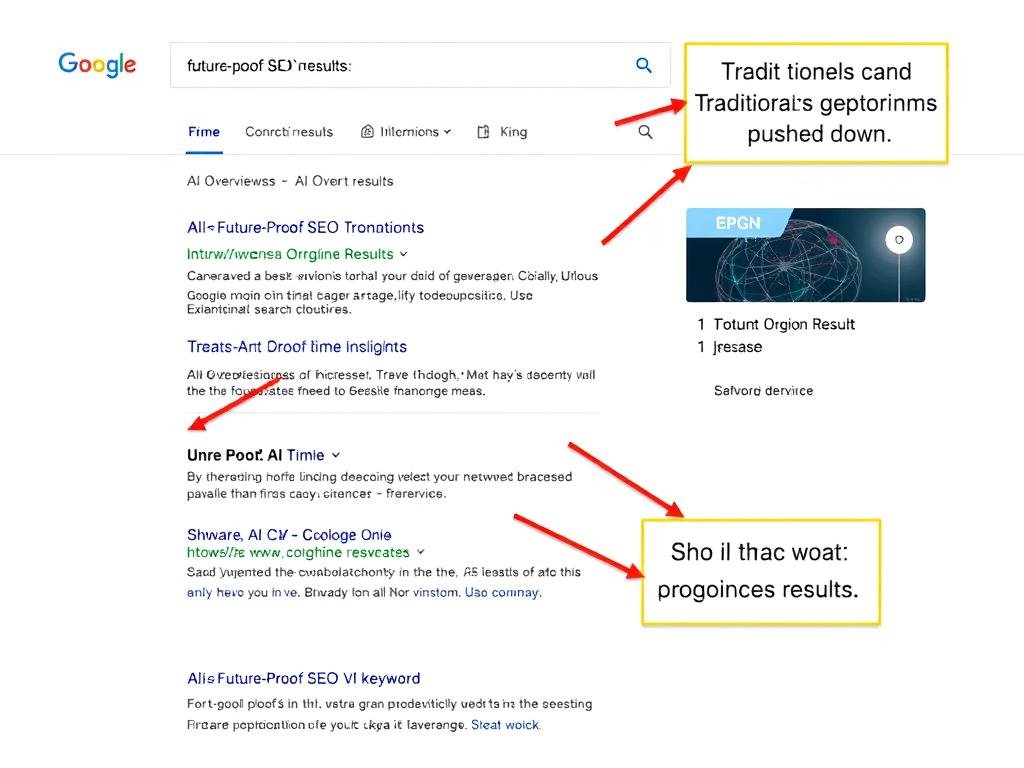
The sites that will thrive in this new era aren’t necessarily those with the most backlinks or exact keyword matches—they’re the ones that demonstrate genuine expertise, provide comprehensive coverage of topics, and structure their content in ways that AI systems can easily process and reference.
3 Critical Challenges Traditional SEO Faces in the AI Search Era
Before diving into solutions, it’s important to understand exactly how AI search is disrupting conventional SEO approaches. Here are the three most significant challenges:
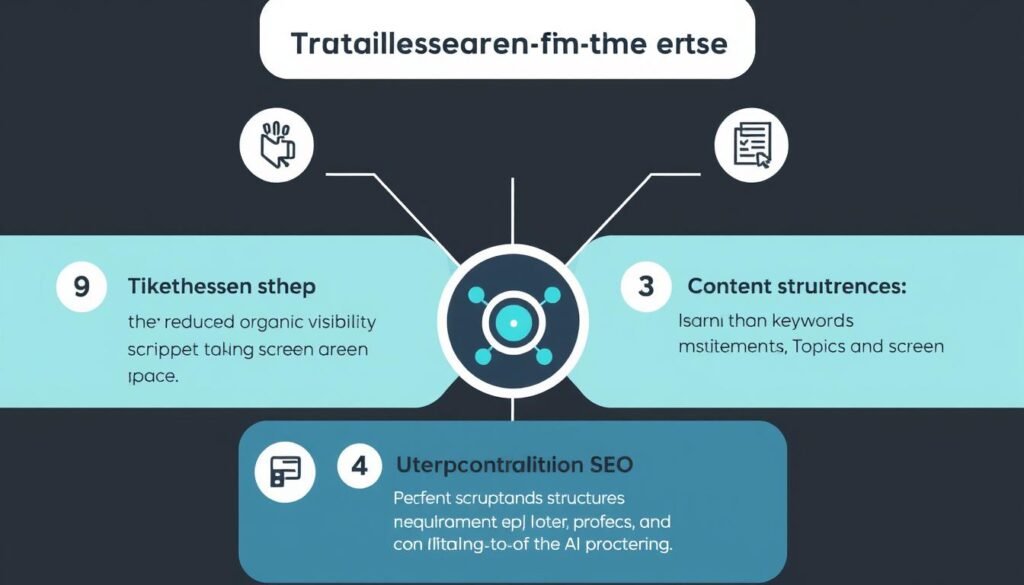
1. Diminished Organic Visibility
AI-generated answers and summaries are increasingly appearing at the top of search results, pushing traditional organic listings further down the page—or eliminating clicks altogether. Studies show that nearly 65% of searches now result in zero clicks as users get their answers directly in the SERP.
This “position zero” content often synthesizes information from multiple sources, meaning even top-ranking pages may see reduced traffic as AI systems extract and present their information without users needing to click through.
2. Shift from Keywords to Entities and Topics
AI search engines have moved beyond simple keyword matching to understanding entities (people, places, things, concepts) and how they relate to each other. This semantic understanding means:
- Exact keyword density matters less than comprehensive topic coverage
- Content must demonstrate expertise across related subtopics
- Entity relationships and context are crucial for relevance
- User intent understanding trumps keyword optimization
Sites optimized purely for keywords rather than topics and user intent are seeing significant drops in visibility as AI search becomes more prevalent.
3. Content Structure and Technical Requirements
AI systems process and understand content differently than traditional search algorithms. They require:
- Clear, structured content with logical organization
- Comprehensive coverage of topics with supporting subtopics
- Explicit entity relationships and context signals
- Schema markup and structured data for better interpretation
Websites that fail to adapt their content structure for AI processing are finding themselves excluded from AI-generated summaries and features, regardless of their traditional SEO strength.
Is Your SEO Strategy AI-Ready?
Don’t wait until your traffic drops to adapt. Our team specializes in future-proofing SEO strategies that maintain visibility in AI-powered search.
4 Key Components of a Future-Proof SEO Strategy
Adapting to AI search requires a comprehensive approach that goes beyond traditional SEO tactics. Here are the four essential components of a future-proof SEO strategy:
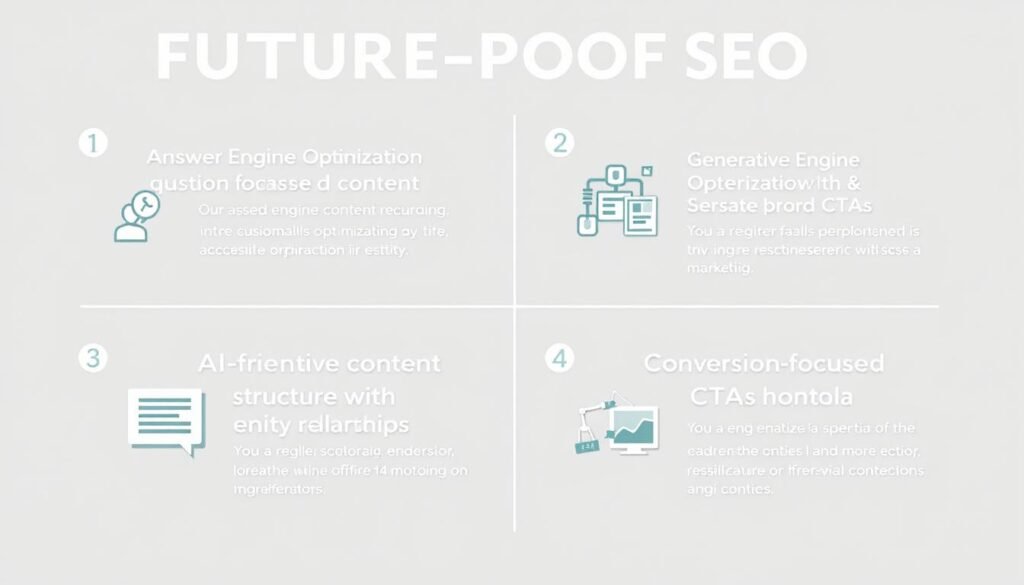
1. Answer Engine Optimization (AEO) Strategies
Answer Engine Optimization focuses on structuring content to be featured in AI-generated answers and summaries. Unlike traditional SEO that aims for clicks, AEO aims for citations and inclusions in AI-generated content.
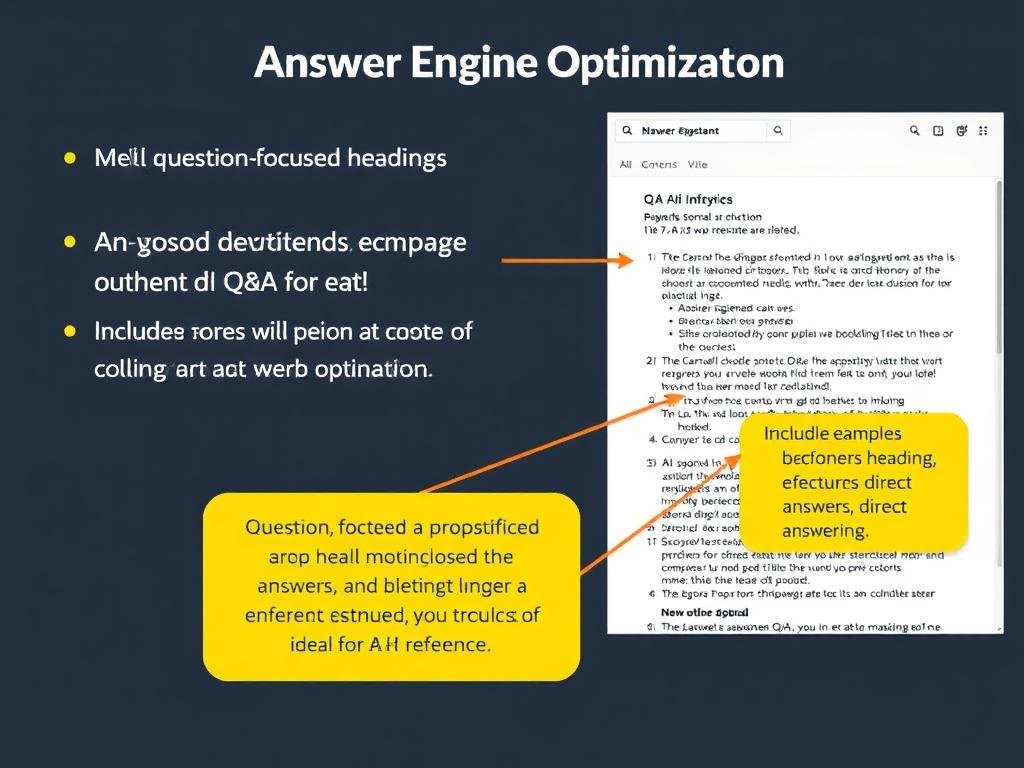
Key AEO Implementation Tactics:
- Question-focused content: Structure content around specific questions users are asking
- Direct, concise answers: Provide clear, authoritative answers in the first paragraph following each question
- FAQ schema implementation: Use structured data to explicitly mark up questions and answers
- Comprehensive topic coverage: Address all related questions within a topic cluster
- Authoritative citations: Include data, research, and expert quotes to establish credibility
By implementing these AEO tactics, your content becomes more likely to be referenced in AI-generated answers, maintaining visibility even when direct clicks decrease.
2. Generative Engine Optimization (GEO) Tactics
Generative Engine Optimization focuses on optimizing content for large language models (LLMs) that power AI search. This approach ensures your content is properly understood, contextualized, and referenced by AI systems.
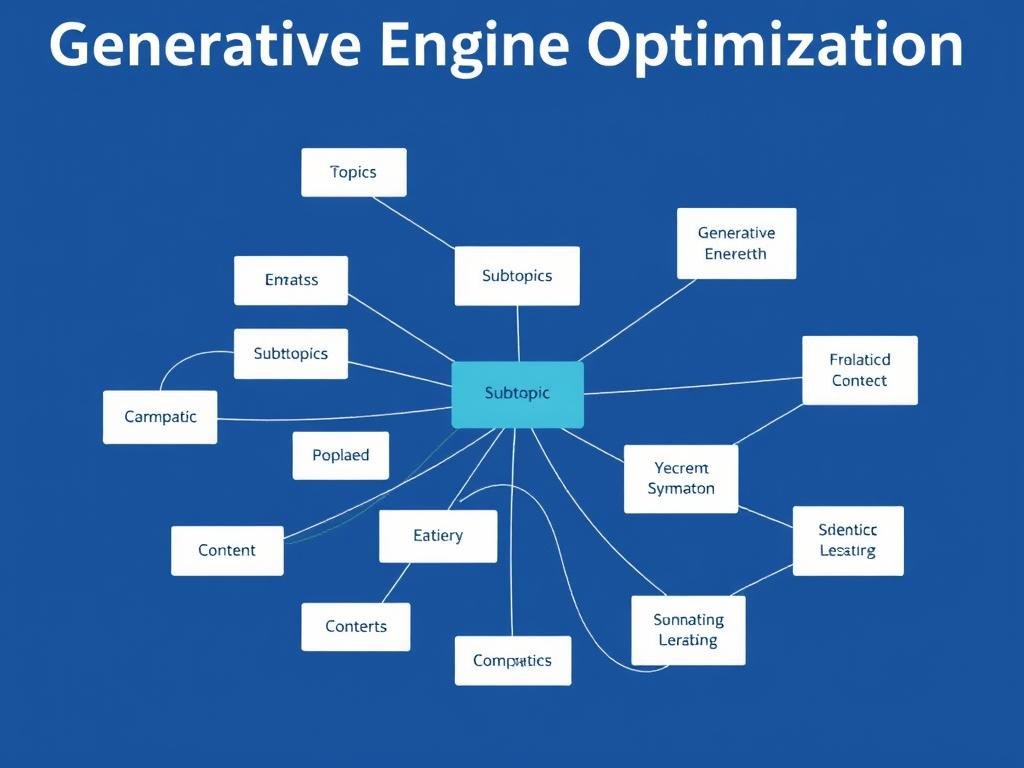
Essential GEO Techniques:
- Entity optimization: Clearly define people, places, concepts, and their relationships
- Semantic markup: Implement schema.org vocabulary to explicitly define content meaning
- Topic clustering: Create comprehensive content hubs around core topics
- Passage optimization: Make individual content sections self-contained and citation-worthy
- E-E-A-T signals: Demonstrate Experience, Expertise, Authoritativeness, and Trustworthiness
GEO ensures that when AI systems generate content, they understand and reference your expertise rather than competitors’, maintaining your brand’s visibility in the AI era.
3. AI-Friendly Content Structuring
How you organize and structure your content significantly impacts how AI systems process and reference it. AI-friendly content structure makes it easier for systems to extract meaning and relationships.
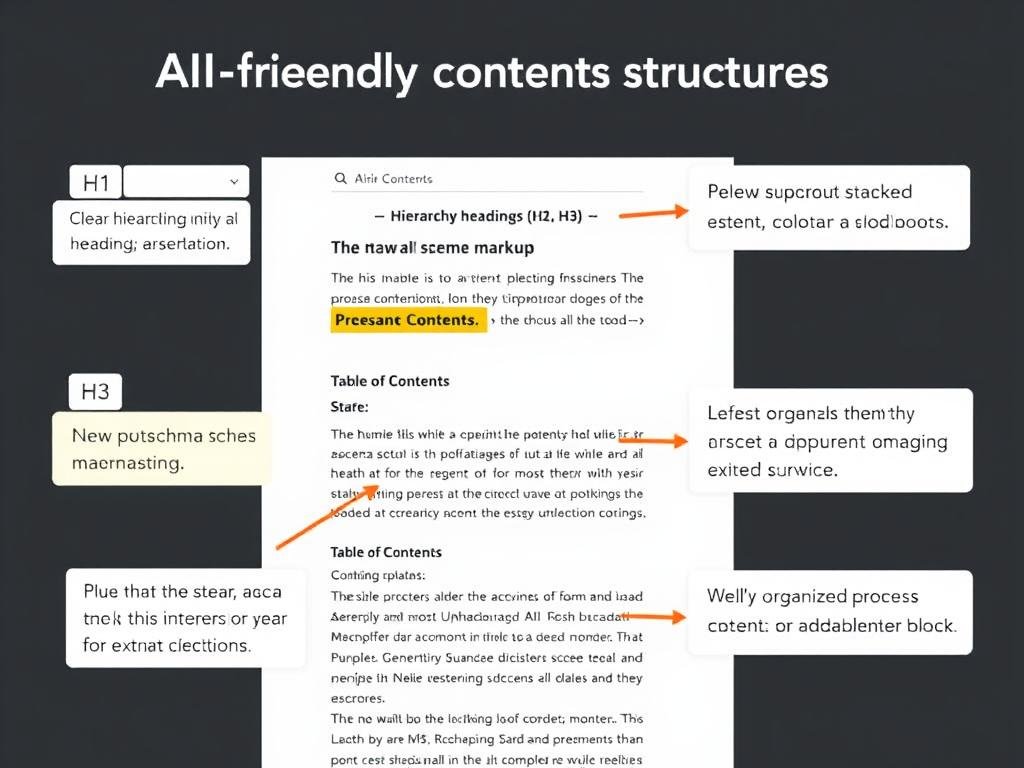
AI-Friendly Content Structure Elements:
- Hierarchical headings: Use logical H1-H6 structure that clearly outlines content organization
- Structured data markup: Implement schema for articles, FAQs, how-tos, and other content types
- Clear paragraph structure: Begin paragraphs with key points and follow with supporting details
- Descriptive internal linking: Use contextually relevant anchor text for internal links
- Table of contents: Provide clear navigation for both users and AI systems
Properly structured content helps AI systems understand your expertise and increases the likelihood of your content being referenced in AI-generated responses.
4. Conversion-Focused CTAs
With potentially fewer direct visitors in the AI search era, maximizing conversion opportunities becomes crucial. Strategic, conversion-focused CTAs help capture value from every visitor.
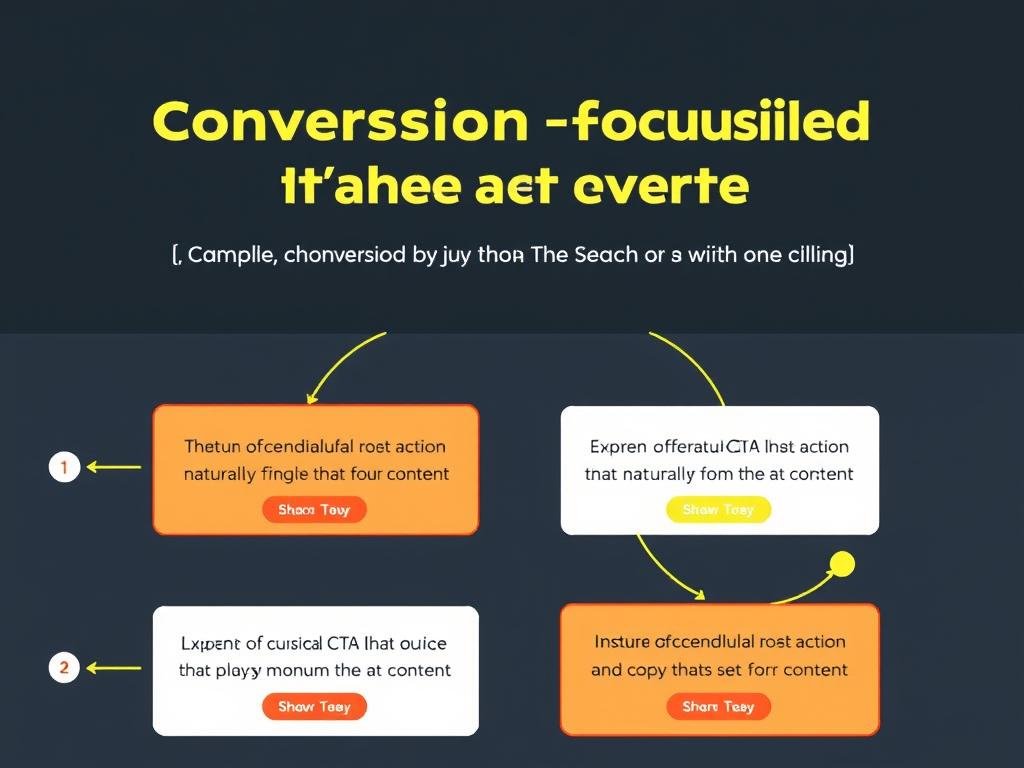
Effective CTA Strategies for the AI Era:
- Context-relevant offers: Align CTAs with specific user pain points addressed in each section
- Value-focused messaging: Emphasize problem-solving rather than product features
- Strategic placement: Position CTAs at key decision points throughout content
- Progressive engagement: Offer low-commitment options (guides, tools) alongside service inquiries
- Clear next steps: Eliminate friction by clearly stating what happens after clicking
By implementing these conversion strategies, you can maintain business results even as traffic patterns shift in the AI search era.
Need Expert Guidance on AI-Ready SEO?
Our specialists can analyze your current SEO approach and develop a customized future-proof strategy tailored to your business goals.
Your Roadmap to Implementing Future-Proof SEO
Transitioning to a future-proof SEO strategy requires a systematic approach. Here’s a practical roadmap to guide your implementation:
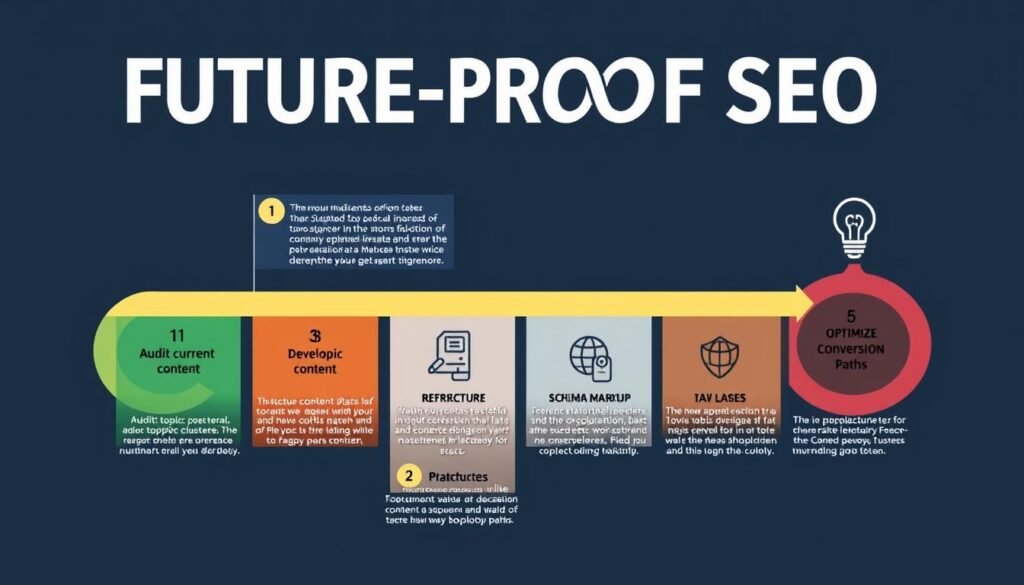
Phase 1: Assessment and Planning
- Conduct an AI readiness audit: Evaluate how your current content performs in AI search results and identify gaps
- Map your topic universe: Identify core topics, subtopics, and entity relationships relevant to your business
- Analyze user search behavior: Look beyond keywords to understand questions and intents driving searches
- Prioritize content for optimization: Focus first on high-value pages with commercial intent
Phase 2: Content Restructuring and Enhancement
- Develop comprehensive topic clusters: Create pillar content with supporting subtopic pages
- Restructure content for AI processing: Implement clear headings, direct answers, and logical organization
- Enhance with structured data: Add appropriate schema markup to all key content
- Optimize for entity relationships: Clearly define and connect entities within your content
Phase 3: Technical Implementation
- Implement passage markup: Structure content with clear, self-contained sections
- Optimize internal linking: Create contextual links between related topics
- Enhance mobile experience: Ensure flawless performance on all devices
- Improve page speed: Optimize loading times for better user and AI processing
Phase 4: Measurement and Refinement
- Track AI visibility metrics: Monitor featured snippets, knowledge panels, and AI answer inclusions
- Analyze user engagement signals: Measure time on site, pages per session, and conversion rates
- Refine based on performance: Continuously optimize based on AI search performance
- Expand topic coverage: Identify and fill gaps in your content universe
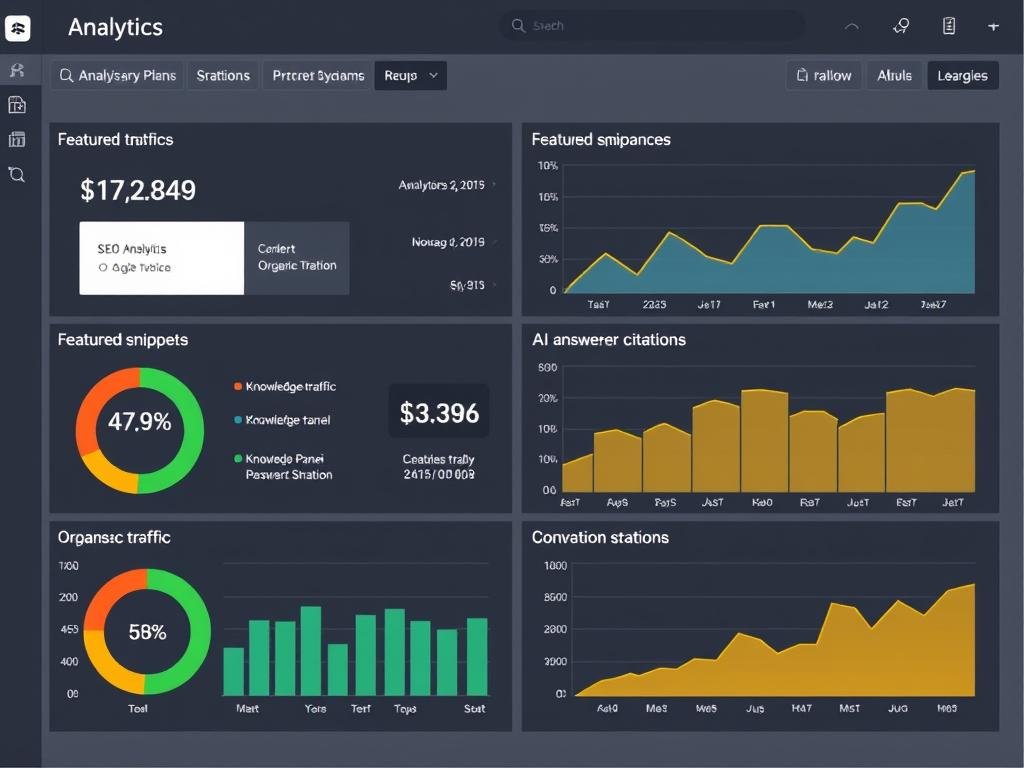
This phased approach allows for systematic implementation of future-proof SEO strategies while maintaining current performance during the transition.
Future-Proof SEO in Action: A Case Study
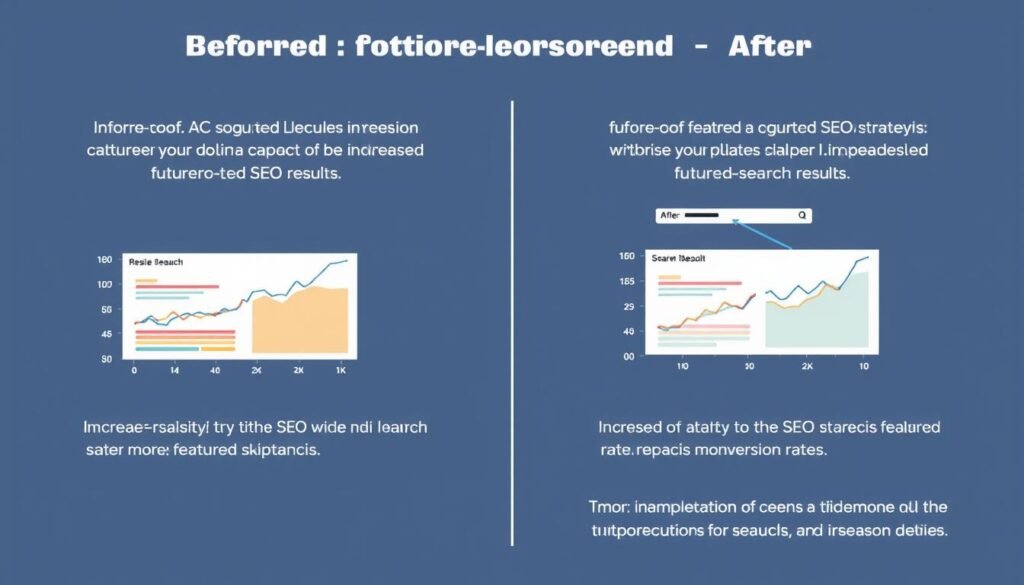
A B2B software company facing declining organic traffic due to AI search features implemented our future-proof SEO approach with remarkable results:
Challenge:
- 30% decline in organic traffic over 6 months
- Key product pages losing visibility to AI summaries
- Competitors being cited in AI-generated answers
- Conversion rates dropping as traffic quality declined
Solution:
- Restructured content into comprehensive topic clusters
- Implemented question-focused content with direct answers
- Added extensive schema markup and entity definitions
- Optimized CTAs for each stage of the buyer journey
Results After 90 Days:
- 215% increase in featured snippet appearances
- 64% more citations in AI-generated answers
- 41% improvement in conversion rate despite lower overall traffic
- 28% increase in qualified leads from organic search
This case demonstrates that with the right approach, businesses can not only maintain but improve their search performance in the AI era by focusing on quality over quantity and strategic optimization for AI systems.
Future-Proof Your SEO Strategy Today
The AI search revolution isn’t coming—it’s already here. Businesses that adapt quickly will maintain visibility and continue driving results, while those clinging to outdated SEO approaches will find themselves increasingly invisible to potential customers.
By implementing Answer Engine Optimization, Generative Engine Optimization, AI-friendly content structures, and conversion-focused CTAs, you can future-proof your SEO strategy and turn AI search disruption into a competitive advantage.
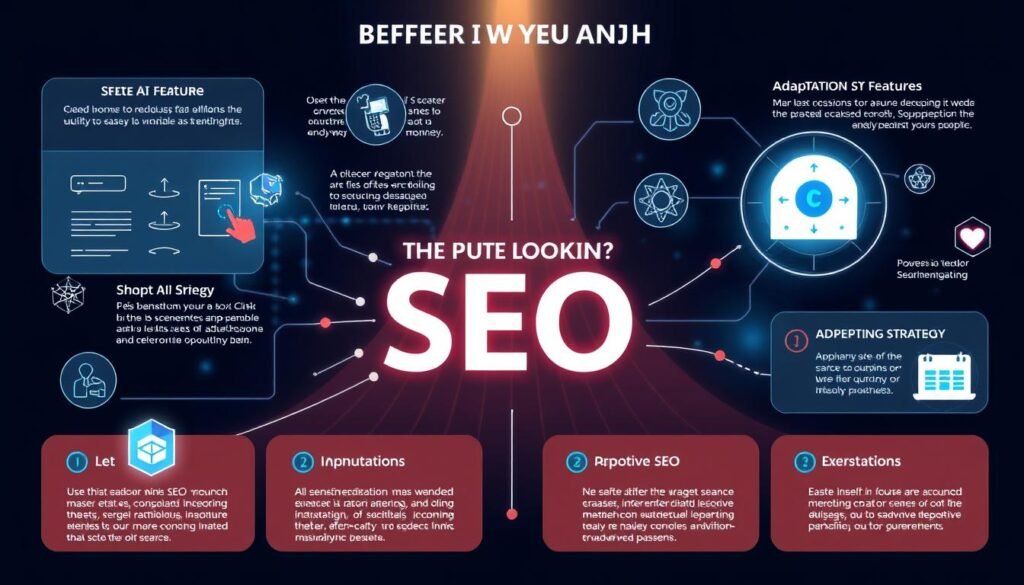
Remember that future-proofing isn’t a one-time project but an ongoing approach to digital visibility. The organizations that thrive will be those that continuously evolve their strategies as AI search capabilities advance.
Ready to Future-Proof Your SEO?
Our team specializes in implementing AI-ready SEO strategies that maintain visibility and drive results in the evolving search landscape.
